What is Prunella Vulgaris?
Prunella vulgaris is a perennial wildflower that is also most commonly known as Heal All or Self Heal. This plant grows in multiple regions across the globe. Self Heal is considered to be a native plant to North America, in which its native habitats include moist fields, pastures, roadsides, and the woodlands. This plant can be located in every state on both coasts in the United States. Self Heal is a member of the mint family and is considered to be quite the adaptive plant in the wild. The plant has earned such a name throughout the years due to its many medicinal properties and uses.
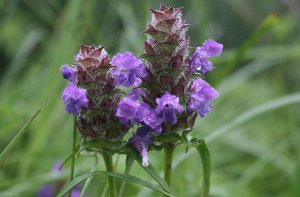
Identifying Self Heal
There are two varieties of prunella to be aware of, as they are commonly mistaken for each other; prunella vulagris and prunella lanceolata. Self Heal (p. vulgaris) is often recognized by its flowering spikes that stand straight upward on the plant. Self Heal also features hairy bracts that are found close to the tubular flowers. In most pictures, Self Heal is shown to be a blue or purple shade. You can find Self Heal growing in most soils, exposure levels of light, and pH conditions, but not in areas that received hot, dry weather in full sun. Check for Self Heal in the shade in this scenario.
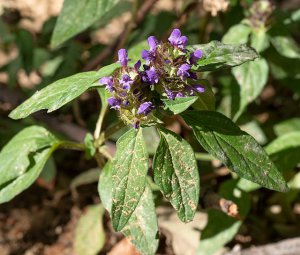
Prunella lanceolata varies slightly in appearance as this variety is hairless with oblong leaves. This variety is most commonly known as Mountian Selfheal or Narrowleaf Selfheal. It shares the same growing conditions as Prunella vulgaris, yet was introduced from Eurasia and has a different leaf shape. Both varieties have a fibrous root system that reaches on average a span of two feet in length, as the plants creep across the ground, typically used as a type of ground cover.
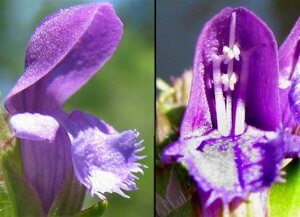
How to Use Self Heal
Starting with the more varied uses that Self Heal has been used for, Self Heal has been harvested for the olive green dye the flowers and stems produce. This dye was also collected and sold in various forms, including pills, liquid extracts, balms, and ointments. The Self Heal plant is also known to be a host plant for the Clouded Sulphur butterfly (a small, yellow butterfly), in addition to being an attractive plant to other butterflies, bumblebees, and caterpillars.
The leaves have been noted to be the most useful part of the plant, as it is the only edible part. The leaves have been eaten both raw or cooked and used in stews, soups, and salads. However, the leaves of Self Heal have been noted to be bitter, due to the tannins that reside on the leaves’ surface, so it is best to wash the leaves before consumption to reduce the bitter taste. The bitter taste of the leaves signifies an important nutritional value found in the leaves, as bitters are known to contain a plethora of nutrients.
Self Heal has been found to contain multiple compounds, including flavonoids, tannins, and acids such as oleanolic, rosmarinic, and ursolic acid. These compounds are not the only value to Self Heal, however, as the plant has been used for a variety of purposes, including as a hemostatic, inflammatory modulator, astringent, antiviral, and a diuretic. The list of potential health benefits from using Self Heal is lengthy but includes a variety of ailments, such as:
- Diabetic complications
- Protection against atherosclerosis
- Improve heart function
- Anti mutagenic/ cancer-fighting
- Treating basic wounds, insect bites, and even oral herpes
Self Heal has also been cited in research as a possible source of treatment for HSV, or herpes simplex virus. Lastly, Self Heal has been noted to also include anti-oxidant and anti-microbial properties.
—————Written by Jordyn Lee
Jordyn Lee is a freelance writer with a background in herbalism and a passion for sustainable living. She has a Bachelor's degree in Communication Studies and continues to learn more about health and nature. Connect with her on (LinkedIn) or Freelancer Profile (upwork.com).
Many of our readers find that subscribing to Eat The Planet is the best way to make sure they don't miss any of our valuable information about wild edibles.
See our privacy policy for more information about ads on this site

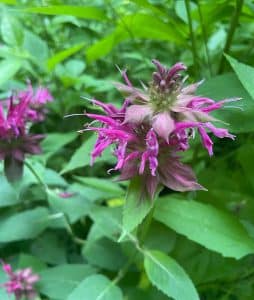
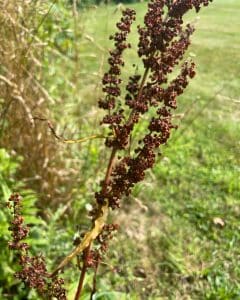



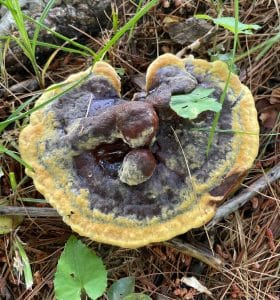
One Response
Hello, are you sure you haven’t confused the subspecies names? Most sources indicate that prunella vulgaris ssp. vulgaris is from Eurasia, and prunella vulgaris ssp. lanceolata is native to North America.